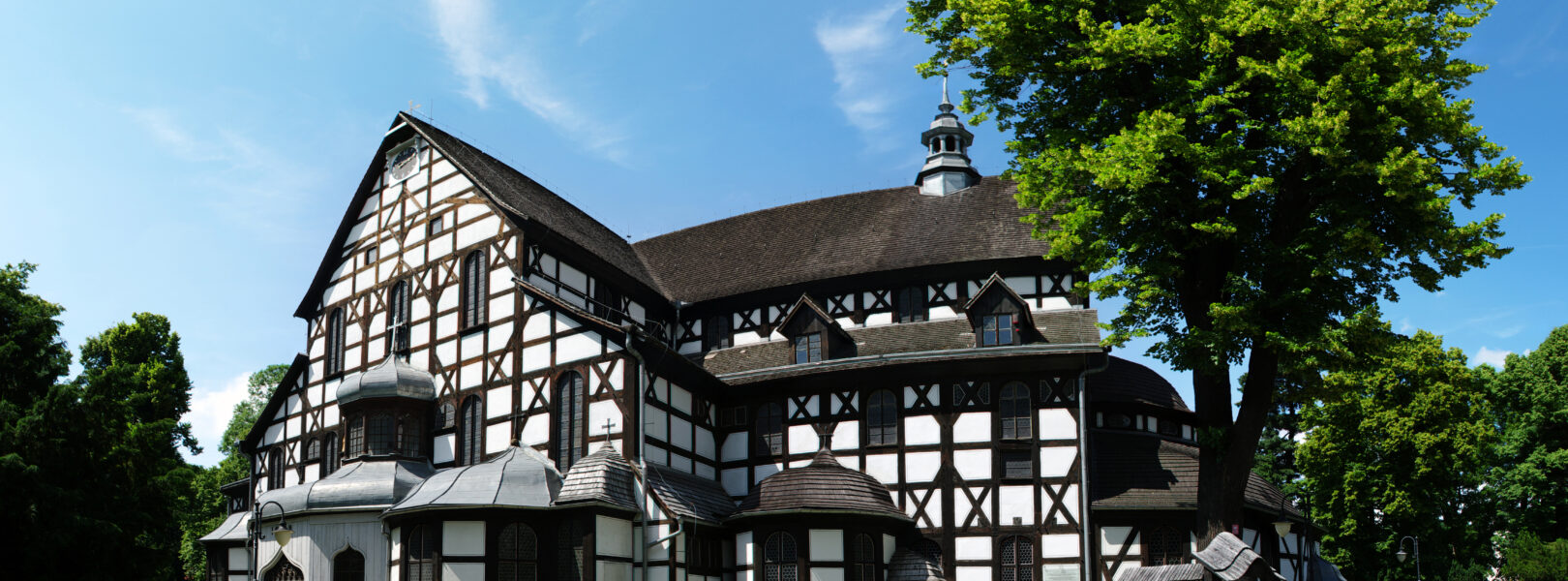UNESCO Pearls in Poland
Day 1.
On arrival in Krakow airport where you are met and driven to your hotel. Then we’ll take an evening stroll through the Old Town and enjoy a welcome dinner in a restaurant. Overnight stay at a hotel. (D)
Day 2.
After breakfast you have a guided tour of Krakow, including the Krakow’s Historic Centre: Main Market Square, St. Mary’s Basilica and the historic trade pavilions of the Cloth Hall, the Royal Route, the Collegium Maius, and Wawel Hill with its renaissance Royal Castle and Cathedral. In the afternoon you’ visit in Wieliczka and Royal Salt Mine. Dinner and overnight stay at your hotel. (B, D)
Day 3.
Departure for the southern part of Little Poland where you will see some of the beautiful Wooden Churches. Your visit in Lipnica Murowana built in XVth century. Transfer to your hotel in Pieniny Mountains region. In the afternoon possibly a raft cruise on Dunajec river along the Dunajec River Gorge, which is submitted on the Tentative List of UNESCO WHS. Regional dinner in Highlanders’ style and overnight stay at your hotel. (B, D)
Day 4.
Today we’ll visit in another wooden church from the UNESCO World Heritage List in Dębno, built in XVth century. Next we’ll transfer to Kalwaria Zebrzydowska, famous for the Mannerist Architectural and Park Landscape Complex and Pilgrimage Park. Your visit in the complex may include a Holy Mass. Dinner and overnight stay at a hotel. (B, D)
Day 5.
Departure for the next point on your World Heritage List in Poland – Auschwitz Concentration Camp. Your visit in the Museum includes a guided tour in Auschwitz, Birkenau and a historic movie. In the afternoon wd drive to Wrocław in the Lower Silesia region. On your way you will be able to see the Upper Silesia region – famous as an important Polish XIXth and XXth century industrial region with coal mines and iron works. Dinner and overnight stay at your hotel. (B, D)
Day 6.
Today your visit in Wrocław – the capital of Lower Silesia region – will start near Centennial Hall, added to the UNESCO list in 2006. Next short sightseeing walk at the Old Town of Wrocław. Afternoon departure to Świdnica for your visit in one of the Churches of Peace. Dinner and overnight stay at your hotel. (B, D)
Day 7.
After breakfast, departure for Jawor where you will see the second Church of Peace built after 1648 as a result of compromise between Catholics and Protestants after the “30-year war”. Your tour continues toward the Polish-German border where you will see the last UNESCO point on your route – Muskauer Park. The park has been included in the list as an example of cross-border cultural collaboration between Poland and Germany, what you will see is special way because of the pass control abolishment according to Schengen Agreement. Dinner and overnight at your hotel. (B, D)
Day 8.
Breakfast. Your departure for your next part of European tour or return drive to Krakow for your flight. (B)

UNESCO Southern Poland tour
previous clients
Testimonials and opinions
Attractions included in this tour
The Royal Way
Cracow has its Royal Way. Followed in the old times by monarchs, deputies and other eminent guests, today the traditional route is filled with tourists and enthusiasts of old Cracow. It begins in the Matejko […]
Salt Mine Wieliczka
Europe’s oldest salt mine is located in Wieliczka, where 25 million tones of salt have been mined over the last 1,000 years. The mine is in operation to this day. Due to the therapeutic microclimate, […]
Kalwaria Zebrzydowska
Kalwaria Zebrzydowska is found to the south-west of Cracow. It is the second most famous Marian shrine in Poland after Częstochowa, annually visited by almost one million pilgrims and tourists. The Calvary Hill, now included […]
Auschwitz-Birkenau – Extermination Camp
Auschwitz-Birkenau (Oświęcim-Brzezinka in Polish) All over the world, Auschwitz has become a symbol of terror, genocide, and the Holocaust. It was established by the Nazis in the suburbs of the city of Oswiecim which, like […]
Centennial Hall in Wrocław
Wrocław – Centennial Hall (inscribed according to criteria (i), (ii), (iv)) The Centennial Hall, a landmark in the history of reinforced concrete architecture, was erected in 1911-1913 by the architect Max Berg as a multi-purpose […]
Churches of Peace in Jawor and Świdnica
Churches of Peace in Jawor and Świdnica (inscribed according to criteria (iii), (iv), (vi)) The Churches of Peace in Jawor and Swidnica, the largest timber-framed religious buildings in Europe, were built in the former Silesia […]
Park Muzakowski
Park Muzakowski (inscribed according to criteria (i), (iv)) A landscaped park of 559.9 ha astride the Neisse River and the border between Poland and Germany, it was created by Prince Hermann von Puckler-Muskau from 1815 […]





 credit card payments
credit card payments